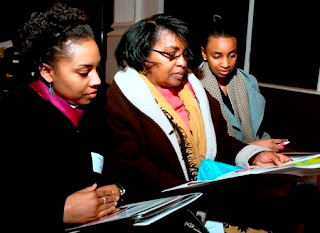
By Tracey Daniels
www.fibroidrelief.org
If you have never suffered from uterine fibroids, chances are that you know someone who has. According to the National Institutes of Health (NIH), by the age of 50, 70 percent of Caucasian and 80 percent of African-American women will have fibroids.
Fibroids, benign growths in the uterus, typically range in size from one millimeter to 20 centimeters. They can grow individually or in clusters and often become detectable by a woman because of the symptoms they cause – heavy bleeding, pressure, and pain.
The good news is although most women will at some point have fibroids, only about 25 percent of those women will have fibroids that are symptomatic and require treatment.
For those women whose fibroids are symptomatic, there are a variety of treatment options available. Choices include lifestyle and diet changes, hormonal treatments such as taking birth control pills, incision-free focused ultrasounds, uterine fibroid embolization and surgeries such as a myomectomy or hysterectomy.
At Fibroid Relief, a patient-centric women’s health organization, we understand that a hysterectomy might be the best choice in certain circumstances. However, we generally advocate for the least invasive treatment possible. Right now, about 200,000 hysterectomies are performed in the U.S. every year due to uterine fibroids. We feel that number could be lowered if more women knew about other treatment options. To learn about non-invasive treatment options, see the treatment chart on Fibroid Relief’s website and consult with your doctor about which choice is best. (If you are not satisfied that your doctor is giving you sufficient options, you may want to seek a second opinion – something many insurance programs allow.)
We also feel that it is essential for women to increase dialogue about uterine fibroids. In our interactions with patients, we are consistently surprised by the number of women who are diagnosed with fibroids, only to find out soon after that a close friend or someone in their family has had fibroids but never discussed it.
There is no shame in having fibroids. One of the best ways to be educated and supported is to talk with other women. Most importantly, women need to know that they are not alone and that there are choices and support available to them.
Additional Resources
Fibroid Relief Facebook Group http://www.facebook.com/
Fibroid Relief Treatment Chart http://fibroidrelief.org/
Fibroid Relief Blog http://fibroidrelief.org/
NIH Fact Sheet on Uterine Fibroids http://report.nih.gov/

